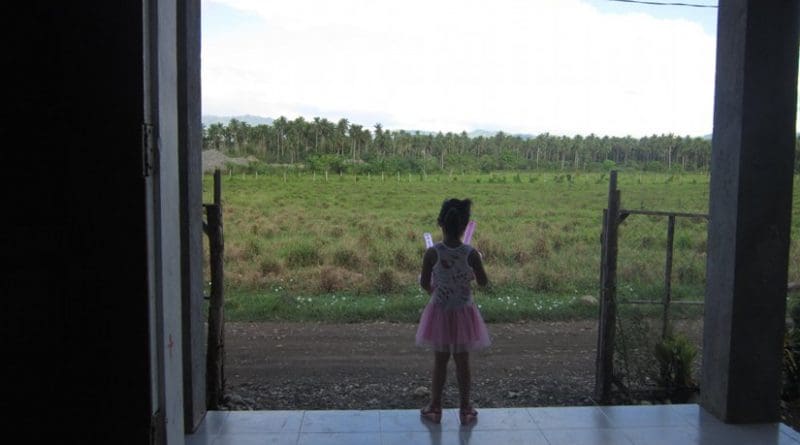Philippines: Megadiversity But 18th Most Endangered Biodiversity Hotspot – OpEd
The Philippines, the world’s second largest archipelago, is one of the few nations that is, in its entirety, both a hotspot and a megadiversity country, placing it among the top priority hotspots for global conservation.
But its unique biodiversity is threatened. Having the highest rates of discovery in the world with sixteen new species of mammals discovered in the last ten years, such endemism however may be lost faster than discovered.
Threatened are 9,250 vascular plant species which includes gingers, begonias, gesneriads, orchids, pandans, palms, and dipterocarps. Some150 species of palms are included in the hotspot list and 70 percent of the 1,000 species of orchids found in the country.
Among its over 530 bird species, 35 percent or over 60 are threatened. These are found in seven Endemic Bird Area hotspots: Mindoro, Luzon, Negros and Panay, Cebu, Mindanao and the Eastern Visayas, the Sulu archipelago, and Palawan.
The best-known endangered bird species is the Philippine eagle (Pithecophaga jefferyi, CR), the second-largest eagle in the world. The Philippine eagle breeds only in primary lowland rain forest. Habitat destruction has extirpated the eagle everywhere except on the islands of Luzon, Mindanao and Samar, where the only large tracts of lowland rain forest remain. Today, the total population is estimated at less than 700 individuals. Captive breeding programs have been largely unsuccessful; habitat protection is the eagle’s only hope for survival.
The other threatened endemic species are the Negros bleeding art (Gallicolumba keayi, CR), Visayan wrinkled hornbill (Aceros waldeni, CR), Scarlet-collared flowerpecker (Dicaeum retrocinctum, VU), Cebu flowerpecker (Dicaeum quadricolor, CR), and Philippine cockatoo (Cacatua haematuropygia, CR).
With regards mammals, the tamaraw (Bubalus mindorensis, CR), a dwarf water buffalo that lives only on Mindoro Island is the most threatened. A century ago the population numbered 10,000 individuals; today only a few hundred animals exist in the wild.
Other mammals are endangered, like the Visayan and Philippine warty pigs (Sus cebifrons, CR and S. philippensis, VU); the Calamianes hog-deer (Axis calamaniensis, EN) and the Visayan spotted deer (Rusa alfredi, EN), which has been reduced to a population of a few hundred on the islands of Negros, Masbate and Panay; and the golden-capped fruit bat (Acerodon jubatus, EN), which, as the world’s largest bat, has a wingspan up to 1.7 meters.
In the reptilian world, the freshwater crocodile (Crocodylus mindorensis, CR) is considered the most threatened crocodilian in the world. Other unique and threatened reptiles include Gray’s monitor (Varanus olivaceus, VU), the Philippine pond turtle (Heosemys leytensis, CR) and a newly discovered monitor lizard, Varanus mabitang, only the second monitor species known in the world to specialize on a fruit diet.
Among all amphibians, 22 are considered threatened including the Philippine flat-headed frog (Barbourula busuangensis, VU), one of the world’s most primitive frog species.
With regards freshwater fishes, most threatene is Sardinella tawilis, a freshwater sardine found only in Taal Lake. Sadly, Lake Lanao, in Mindanao, seems likely to have become the site of one of the hotspots worst extinction catastrophes, with nearly all of the lakes endemic fish species now almost certainly extinct.
Man’s Destruction of Forests All but Decimated Most of RP’s Biodiversity
Forests, the Philippines’ leading natural habitat of the country’s biodiversity, are rapidly disappearing. By 2040, there may be no virgin forests, many forestry experts predict. Non-believers scoff at this, saying it is an exaggeration. But the figures cannot be wrong. The effects of deforestation are not figments of imagination.
The rate of deforestation in the country is among the highest in the world. The worst deforestation happened during the period of 1990 to 1999 where 750,000 acres of virgin forest were lost. Today, only 1.75 million acres remain of the nation’s virgin forests.
The loss is incredible, the rate of deforestation in that decade was almost 75,000 acres a year. It also came at a time when logging ban was imposed in some selected sites in the country.
As a result, flooding, soil erosion and degradation pegged at 100,000 tons of soil yearly, loss of species diversity and genetic material, loss of human lives and properties and aesthetic and recreational loss were at their worst.
Much of the blame is on the government that, over the years, have passed laws favorable to logging concessions and implemented forest protection poorly. Government negligence has prompted the devastation of the forests. Today, much of the remaining forests are still being invaded by commercial loggers.
Philippine forestry laws passed since 1930 have failed to provide adequate security provisions for virgin and secondary growth forests, thus the forests had virtually no protection at all. For instance, there is only one forest guard for every 7,500 acres.
But even then, many official policies and strategies from the very start were faulty.
And many polices continue to be faulty.


It’s heartbreaking to know this, the Philippines is a blessed country, rich in biodiversity, one of the megadiverse countries,but…. Hoping that its citizen will reciprocate to the beauty it offers.